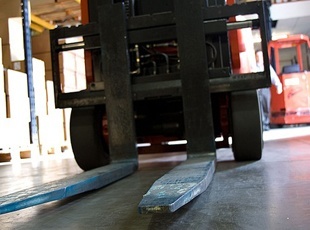How many workers are injured each year as a result of forklift misuse? We could say “too many,” but to be precise, the total number of injuries per year (non-serious, serious, and fatal) is 96,785. That’s right, nearly 100,000 workers are injured per year due to improper training or sheer carelessness on the job.
Compared to the estimated number of forklifts in the United States (855,900), that means that each year, more than 1 in 10 forklifts are involved in an accident (assuming 1 accident per forklift).
In our latest infographic, we share with you the importance of forklift safety, including the figures and statistics that safety managers need to follow to protect workers from injury.
Additional Advice on Forklift Safety
For more information on forklift/lift truck safety, we would like to highlight for you the following resources:
- OSHA Powered Industrial Trucks and Forklifts Information Page
- Preventing Young Workers from Operating Forklifts
- Sample Daily Checklist for Powered Industrial Trucks
Under 18? Untrained? Don’t Even Think It
It is a violation of Federal law for anyone UNDER 18 years of age to operate a forklift or for anyone OVER 18 years of age who is not properly trained and certified to do so.
Powered Industrial Truck Training is a Necessity
To operate a forklift both safely and legally, all operators must complete a training program that includes the following topics (29 CFR 1910.178(l)(3)):
- Truck Related Topics
- Operating instructions, warnings, and precautions for the types of truck the operator will be authorized to operate
- Differences between the truck and the automobile;
- Truck controls and instrumentation: where they are located, what they do, and how they work;
- Engine or motor operation;
- Steering and maneuvering;
- Visibility (including restrictions due to loading);
- Fork and attachment adaptation, operation, and use limitations;
- Vehicle capacity;
- Vehicle stability;
- Any vehicle inspection and maintenance that the operator will be required to perform;
- Refueling and/or charging and recharging of batteries;
- Operating limitations;
- Any other operating instructions, warnings, or precautions listed in the operator’s manual for the types of vehicle that the employee is being trained to operate.
- Workplace-related topics:
- Surface conditions where the vehicle will be operated;
- Composition of loads to be carried and load stability;
- Load manipulation, stacking, and unstacking;
- Pedestrian traffic in areas where the vehicle will be operated;
- Narrow aisles and other restricted places where the vehicle will be operated;
- Hazardous (classified) locations where the vehicle will be operated;
- Ramps and other sloped surfaces that could affect the vehicle’s stability;
- Closed environments and other areas where insufficient ventilation or poor vehicle maintenance could cause a buildup of carbon monoxide or diesel exhaust;
- Other unique or potentially hazardous environmental conditions in the workplace that could affect safe operation.
Further, any operator who has been involved in an accident, near miss, or evaluation stemming from unsafe operation must be retrained; and any time the operator is assigned to a new type of truck or different work condition must be trained. (29 CFR 1910.178(l)(4)).
Optimum Safety Management has a team of licensed trainers who can help your organization to recognize its full Return on Safety™, the engagement, productivity, and profitability that stems from safe operation and an effective safety culture. Learn more about exceeding compliance by signing up for our mailing list.









